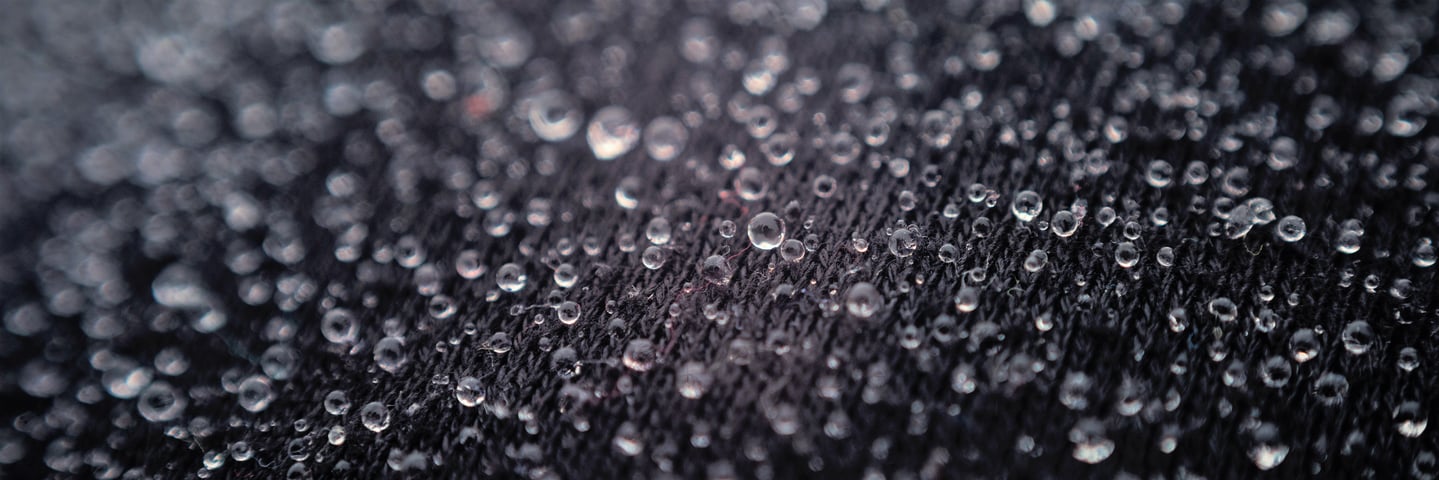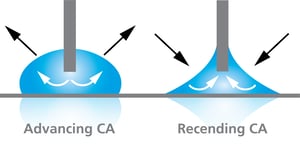
There is a growing need to be able to characterize superhydrophobic surfaces. Reliability and repeatability are key factors in these measurements. The contact angle is the most used method for superhydrophobic surface characterization. The static contact angle still being the most used. In addition, advancing and receding angles should be measured as the low contact angle hysteresis is also a requirement for superhydrophobicity.
Water contact angle measurement on superhydrophobic surfaces is challenging as by definition, the water doesn’t want to be in contact with the surface. Thus, drop placement to the surface is more difficult as the water drop would rather be attached to the needle than to the sample surface.
One of the biggest challenges in superhydrophobic surface development is durability. For this reason, different types of abrasion tests are commonly conducted to evaluate the durability. Static contact angle measurements are often done but they are not able to provide much information on the effects of abrasion. The static contact angle is not easily affected by abrasion because the advancing contact angle remains high [1].
Similar examples have been shown to fabrics coated with a superhydrophobic coating. Static contact angle, as well as contact angle hysteresis, were recorded as a function of washing cycles. It was noted that while static contact angle remained relatively high at around 150° throughout the 60 washing cycles, the contact angle hysteresis started to increase rapidly after around 20 cycles, reaching a value of 60° after 60 washing cycles [2].
Contact angle measurement with the needle method is recommended. In this method, a very narrow stainless-steel needle is brought to the proximity of the surface.  The dispending rate is set to a low value to diminish the dynamic effects caused by the flow of liquid. The dispensing is continued as long as the contact line between the droplet and surface is moving. When this happens the advancing contact angle can be measured. Similarly, the liquid is taken back to the needle, again recording the droplet as long as the contact line starts to withdraw. The receding contact angle is measured.
The dispending rate is set to a low value to diminish the dynamic effects caused by the flow of liquid. The dispensing is continued as long as the contact line between the droplet and surface is moving. When this happens the advancing contact angle can be measured. Similarly, the liquid is taken back to the needle, again recording the droplet as long as the contact line starts to withdraw. The receding contact angle is measured.
To see how contact angles on superhydrophobic surfaces are measured in practice, please watch the short webinar through the link below.
[1] X. Tian, T. Verho, and R.H.A. Ras, ”Moving superhydrophobic surface toward real-world applications”, Science 352 (2016) 142.
[2] Zhao, Y., Xy, Z., Wang, X. and Lin, T., ”Photoreactive azido-containing silica nanoparticle/polycation multilayers: Durable superhydrophobic coating on cotton fabrics”, Langmuir 28 (2012) 6328.
Single-cell trapping can be done with the help of superhydrophobic and superhydrophilic patterns.
Superhydrophobic surface is defined by having the static water contact angle above 150 ° and contact angle hysteresis less than 5 °.
There are three contact angle measurement methods for superhydrophobic surfaces; static, advancing/receding and roll-off angle.
A self-cleaning surface is any surface with the ability to readily remove any dirt or bacteria on it. Self-cleaning surfaces can be divided into three different categories; superhydrophilic, photocatalytic and superhydrophobic.
Blood-repellent surfaces are needed in medical devices that come in contact with blood. The traditional approach has been the use of antithrombotic surface treatments However, these coatings are prone to eventually wear-off. Superhydrophobic surfaces have been proposed as an alternative solution.
With increasing understanding of the superhydrophobicity, the measurement methods to quantify the degree of hydrophobicity deserve some thought.
This video will explain two main methods for measuring dynamic contact angle.
Superhydrophobic surfaces were an instant hit in the scientific community when they were introduced over two decades ago
